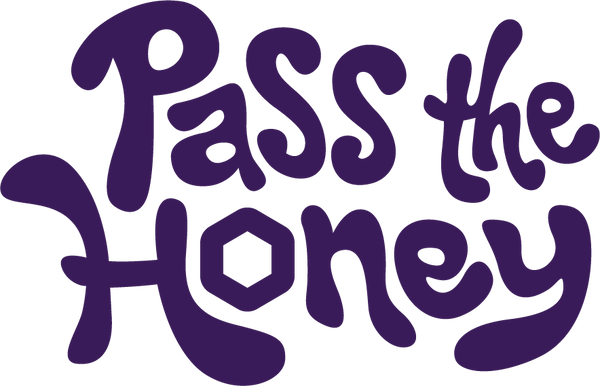Most non honey connoisseurs go for the cute plastic bear with the squeeze top, right? He’s cute, easy to use without being messy, and for some strange reason a honey filled plastic bear just makes you think, honey! Unfortunately, this cute little honey bear that we grew up knowing comes at the cost of fraud and adulteration. While there might be some traces of real honey in those bear-shaped-bottles as a base, it is likely diluted with high-fructose corn syrup along with other sugars and fillers. What may surprise you most about this though, is that this product can still legally be labeled and sold as pure honey.
Liquid honey has been identified as the third most fraudulent food product in the world and it is estimated that over three quarters of honey on US shelves is adulterated. Honey fraud, or economically motivated adulteration, is a public health problem for consumers, a health crisis for honeybees, and an employment crisis for beekeepers.

Adulteration for liquid honey dates to the origin of the honey extractor and takes on many different forms. One is the dilution of liquid honey using high fructose corn syrup, other sweeteners, and water. This happens at points of extraction and aggregation, allowing the producers to use a lower cost input to “stretch” the honey, similar to that of cutting drugs.
The other major adulteration concern is ultrafiltration. This is the filtration of honey through a very fine filter to remove pollen. Without the ability to trace pollen, regulators cannot track the point of origin for aggregated honey.

This is relevant because countries like China are notorious for producing honey with antibiotics, lead, and other pollutants. Thus, the importing countries want to trace these shipments in order to verify their quality. Ultra-filtration also eliminates the ability to verify claims of “single source” honey. A good example of the challenges around adulteration is manuka honey. This honey sourced from New Zealand is touted for its health benefits and thus garners a higher price in the market. Some companies are blending manuka honey with other honeys and still selling it as a premium product. The grocery chain Trader Joe’s was sued in 2018 for this practice.
Economically motivated adulteration of honey has been estimated to have caused up to $1 billion of economic damage to American beekeepers between the years of 2015-2019. Over the same period, the study observed an average decline of $201/ton/year reversing a trend of increasing price per ton over the prior decade.

The ability for small-scale producers to negotiate and sell honey to customers is affected by the prices published in the USDA’s monthly honey report. On a monthly basis, large packers will report to the USDA on prices paid for bulk honey, however, those packers will buy from beekeepers at an unsustainably low rate and market to consumers at a higher price range. While the USDA monthly honey report has made the honey market more transparent, it currently supports market behaviors that exert downward pressure on honey prices for beekeepers. For beekeepers who work to improve their practices or seek to improve their practices, the lack of a clear method for beekeepers to differentiate their honey products based on production approach locks the market in its current state.
Unfortunately, if companies wish to have authentic honey they must apply rigorous sourcing standards and test the honey purchased from sellers. Since large amounts of adulterated honey end up in the US market – the US produces only 25% of honey consumed nationally and imports the other 75%. – the burden of testing for adulteration falls primarily on honey manufactures or honey “packers” and food companies using honey in ingredients. Testing for adulteration at the manufacturer level is entirely optional.
Thankfully comb honey is not susceptible to these practices given there is no heating, blending, processing, or mechanical extraction needed to harvest comb honey. Pass the Honey does however still ensure that the honeycomb we source is 100% real, unadulterated, and free of pesticides by using the most advanced form of testing, nuclear magnetic resonance (NMR). NMR testing analyzes a multitude of components in honey such as identifying alterations, geographical production location, floral sources of honey, antibiotics, pesticides, herbicides, fungicides, and other industrial contaminants. Pass the Honey uses the Environmental Protection Agency’s maximum residue limits (MRL’s) as a threshold for residues; and in the case of glyphosate, the lab uses its own extremely low threshold of 0.5 ppb.
We also ensure the integrity of our honeycomb by sourcing from small beekeepers who use natural beekeeping practices. We know exactly where and how our honeycomb was produced and how it travels. One of the many benefits of honeycomb is that the honey is protected inside the comb wax from the moment the bees make it.

